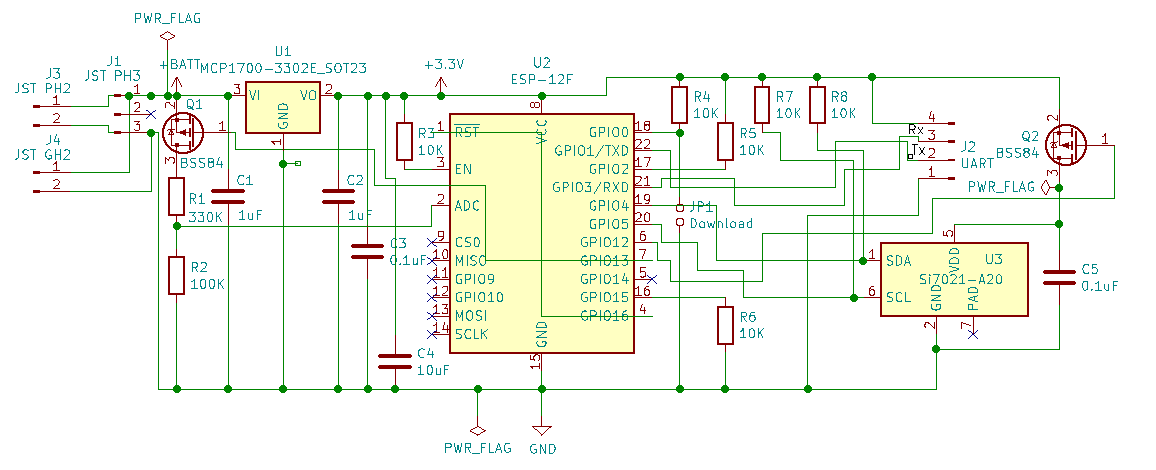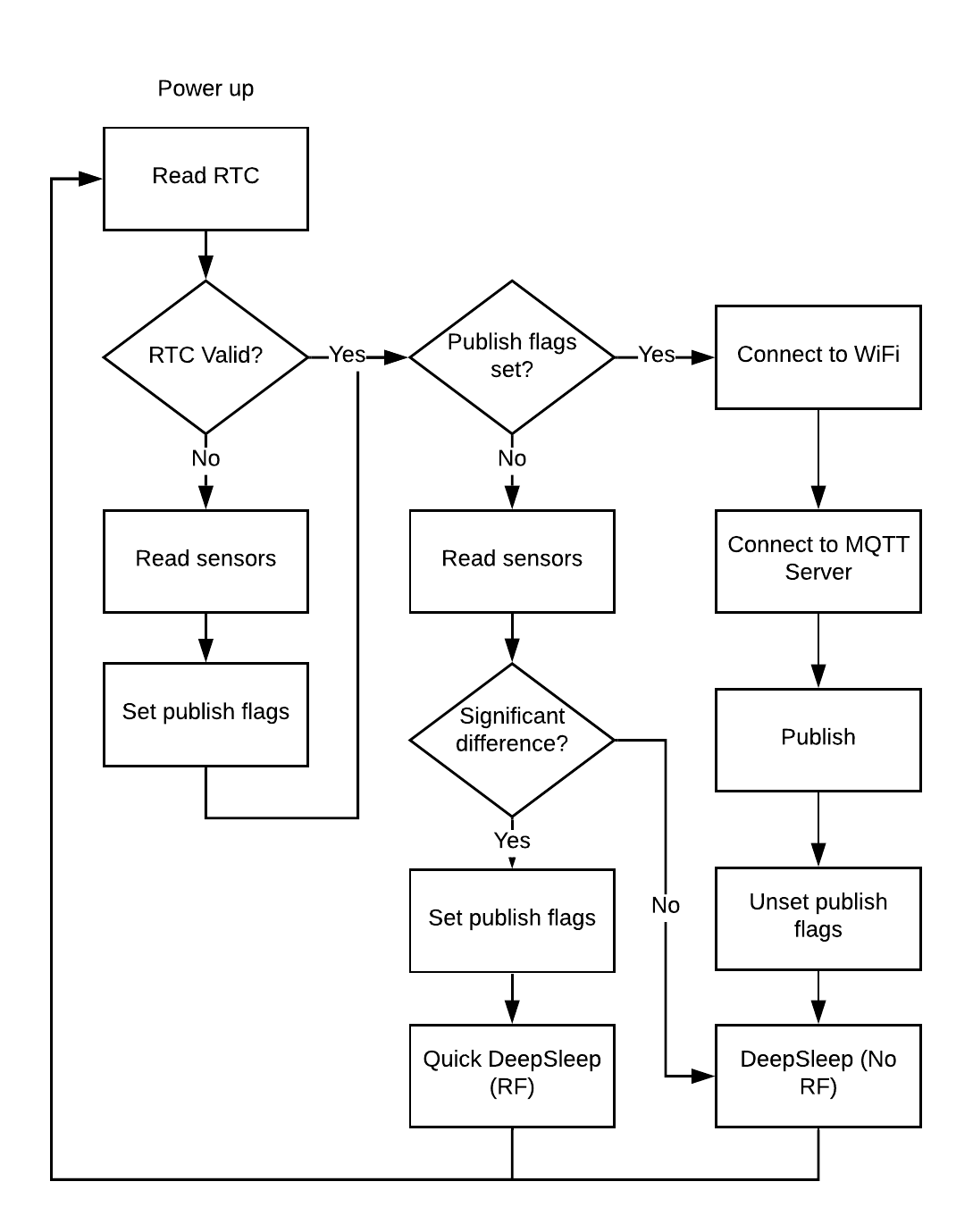- Thu May 20, 2021 4:53 am
#91429
Thanks for taking a look!
> you have to disable wifi for more stable measurement
Measurements occur during the WAKE_RF_DISABLED cycle, with WiFi.mode(WIFI_OFF) for safe measure. I am manually calibrating Vref on each chip with a multimeter.
When I moved from calibration to one location which was 10C hotter, the voltage measurement jumped from 3.95V (correct) to 4.17V and is staying there. I've just re-measured the actual battery voltage with a multimeter and it is 3.92V, even though the temperature is now 7C cooler than during calibration (this unit is in a greenhouse). Maybe humidity affects the reading?
I am aware that input impedance matters, and I could try dropping the total resistor values from 430K to e.g. 4.3K, which with the mosfet shouldn't impact power consumption too much. But am I unrealistic in expecting to get +- 20mV accuracy from the ADC? 10 bit resolution should be 1mV?
> you may have some leakage via the i2c pullups; try connecting them after the mosfet/direct to si.
Great spot - I can route them to the mosfet vcc output.
> 60nA standby current
Yes this is small, now that I recalculate what this is at 9 months it is only 0.4mAh! So I will ditch this mosfet to simplify the circuit.
> direct connection between rst and gpio16
Stupid questions but I am current in understanding that:
1. There is no internal PULLUP on RST (
ESP-12F datasheet)
2. This doesn't matter as according to the
ESP8266EX datasheet, `EXT_RSTB goes high after VDD33: 0.1ms` ie. it is held high by the chip?
3. Therefore, if you leave RST floating (rst ->|- gpio16 with gpio16 high), it will be held high internally?
4. When gpio16 is held low, current can flow through the diode and trigger a reset?
5. By using a diode, you are protecting RST from "external vcc" in addition to the internal connection which could damage it over time?
The existing process for programming is to power cycle with the download jumper connected. I'm looking to move this all to pogo pins for less components, so I could short GPIO0 and rst in the pogo adapter to GND to trigger a download cycle. The only reason for splitting out the download jumper is I often access serial debugging, but I could just disconnect the GND short in the adapter (I'd probably debug over battery power so would only need GND, Rx and Tx anyway)?
Thanks again,
Amadeus



